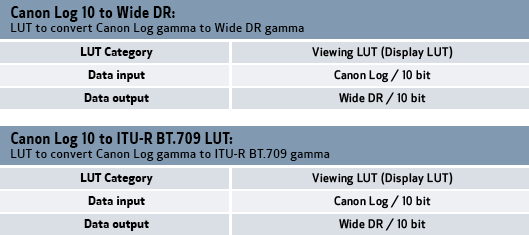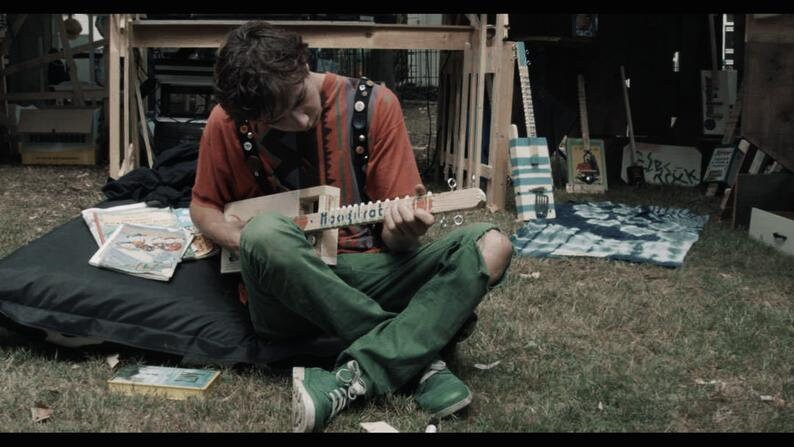
- #Canon c log lut how to
- #Canon c log lut movie
- #Canon c log lut install
- #Canon c log lut skin
- #Canon c log lut software
The left video below is now using the +0.66_Stops Rec.709 LUT, the middle is using the Native LUT, and the right is using the -0.66_Stops Rec.709 LUT. Now let’s use the C-Log to Rec.709 Exposure Correction LUTs instead. This not only slows down my editing, but there’s a good chance my exposure adjustments may not be accurate or consistent. I now need to spend time manually adjusting the exposure of the left and right footage to match the properly exposed footage in the middle. They look okay, but as you can see, the left video is darker while the right is brighter. Same Canon C-Log 3 Rec.709 LUT applied to all three videos Now let’s convert these C-Log 3 videos to Rec.709 using Canon’s C-Log 3 Cinema Gamut LUT. Underexposed 2/3 (Left), Correct Exposure (Middle), Overexposed 2/3 (Right) The left is underexposed by 2/3 a stop, the middle is exposed correctly, and the right is overexposed by 2/3 a stop. Example footageīelow are keyframes from three videos shot using C-Log 3 / Cinema Gamut on an EOS R5. Let’s take a look at before and after examples to see the C-Log to Rec.709 Exposure Correction Luts in action. These LUTs are a huge timesaver (I know, I use them all the time), especially when importing and editing lots of footage that needs to be converted to Rec.709. Under and overexposed footage (within 2 stops) are instantly corrected, and appear as if you nailed their exposure in-camera. Footage underexposed by 2/3 a stop? Use the +0.66 Rec.709 LUT. They are modeled on Canon’s official Rec.709 LUTs for the EOS R, R3, R5, R5C, R6 and R7.įootage overexposed by 1 stop? Use the -1 Stop Rec.709 LUT. These 84 custom LUTs convert Canon C-Log and C-Log 3 footage to the Rec.709 color space AND normalize exposure using the proper C-Log gamma curve. That’s where these Exposure Correction LUTs come in!
#Canon c log lut skin
This can be accidental or intentional, for many videographers slightly overexpose their C-Log footage to create better looking skin tones and reduce noise.Ĭanon’s official Rec.709 LUTs do a good job of converting C-Log to Rec.709, but their LUTs are designed for perfectly exposed footage. In reality however, footage often turns out over or underexposed.
#Canon c log lut how to
#Canon c log lut install
The download will include the free LUTs, along with some documentation that will help you install the. To download the free LUTs, just click the button below. Perfect for sRGB and Rec 709 footage, LUTs like “Cobi 3” and “Trent 18” add a soft touch of color to your footage. Free Cinematic LUTsĭarken the shadows with bold cinematic LUTs like “McKinnon 75” and “Pitaya 15.” Free LUTs for Standard Footage With free LUTs like “Faded 47” and “Tweed 71,” you can give your footage a faded vintage look - reminiscent of old, processed photographs. We decided 13 free LUTs was not enough so we have expanded this post to include 35 more! Free Vintage LUTs

I had a lot of fun making these, and hopefully you’ll get some use out of them.ĭownload 13 FREE Custom LUTs for Log Footage


#Canon c log lut movie
As with most LUTs, a lot of these looks are based off of movie scenes that I like, or film stocks that I always reach for when shooting photography.įor the record, I think my favorite LUT from this pack, and one that I think I’ll find myself using quite often as a base-LUT, is called “NaturalBoost.” In my opinion, it has just enough of that classic teal/blue look with enough of a soft roll-off for other scenarios. From a crisp, blue morning scene to a lush, green forest, there are different looks for most occasions in here. There’s a look for various situations included in this download. Varied Looks for Different Types of Scenes If this is the case, that’s all you need to do if your footage is in REC709, or something like it.
#Canon c log lut software
Most editing software has the option to raise or lower the intensity of the LUTs. So, if you’re shooting on a more standard color curve, these LUTs will potentially look too harsh. This means that they work primarily well on shots with a flatter look. The main thing to consider is that these LUTs were designed for Log footage. In the above video, Robbie Janney gives a walkthrough on how to load up LUTs and give them a try.


 0 kommentar(er)
0 kommentar(er)
